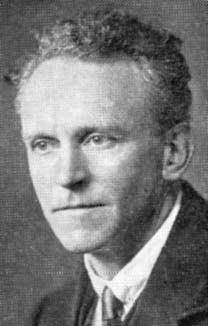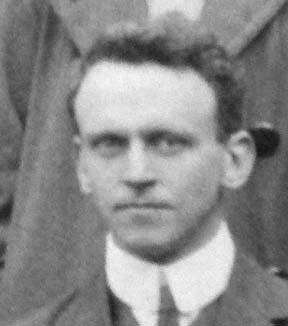Known for Textbooks on geometry Alma mater St Andrews University Spouse Agnes Beveridge (m. 1912) | Nationality Scottish Role Mathematician Name Duncan Sommerville | |
 | ||
Died January 31, 1934, Wellington, New Zealand Books The elements of non-Euclidean geometry Education | ||
Duncan MacLaren Young Sommerville (1879–1934) was a Scottish mathematician and astronomer. He compiled a bibliography on non-Euclidean geometry and also wrote a leading textbook in that field. He also wrote Introduction to the Geometry of N Dimensions, advancing the study of polytopes. He was a co-founder and the first secretary of the New Zealand Astronomical Society.
Contents

Sommerville was also an accomplished watercolourist, producing a series of works of the New Zealand landscape.
The middle name 'MacLaren' is spelt using the old orthography M'Laren in some sources, for example the records of the Royal Society of Edinburgh.
Early life
Sommerville was born in Beawar, India where his father was employed as a missionary doctor by the United Presbyterian Church of Scotland. The Rev Dr James Sommerville had been responsible for establishing the hospital at Jodhpur, Rajputana.
The family returned home to Scotland, where Duncan first spent 4 years at a private school in Perth, before being sent to Perth Academy. He then studied at the University of St Andrews in Fife, where in 1905 he was awarded Doctor of Science for his thesis, Networks of the Plane in Absolute Geometry. Sommerville taught at St. Andrews from 1902 to 1914.
In projective geometry the method of Cayley–Klein metrics had been used in the 19th century to model non-euclidean geometry. In 1910 Duncan wrote "Classification of geometries with projective metrics". The classification is described by Daniel Corey as follows:
He classifies them into 9 types of plane geometries, 27 in dimension 3, and more generally 3n in dimension n. A number of these geometries have found applications, for instance in physics.In 1910 Sommerville reported to the British Association on the need for a bibliography on non-euclidean geometry, noting that the field had no International Association like the Quaternion Society to sponsor it.
In 1911 Sommerville published his compiled bibliography of works on non-euclidean geometry, and it received favorable reviews. In 1970 Chelsea Publishing issued a second edition which referred to collected works then available of some of the cited authors.
Sommerville was elected a Fellow of the Royal Society of Edinburgh in 1911. The following year he married Louisa Agnes Beveridge.
Work in New Zealand
In 1915 Sommerville went to New Zealand to take up the Chair of Pure and Applied Mathematics at the Victoria College of Wellington.
Duncan became interested in honeycombs and wrote "Division of space by congruent triangles and tetrahedra" in 1923. The following year he extended results to n-dimensional space.
He also discovered the Dehn–Sommerville equations for the number of faces of convex polytopes.
Sommerville used geometry to describe the voting theory of a preferential ballot. He addressed Nanson's method where n candidates are ordered by voters into a sequence of preferences. Sommerville shows that the outcomes lie in n ! simplexes that cover the surface of an n − 2 dimensional spherical space.
When his Introduction to Geometry of N Dimensions appeared in 1929, it received a positive review from B. C. Wong in the American Mathematical Monthly.
Sommerville was co-founder and first secretary of the New Zealand Astronomical Society (1920). He was President of Section A of the Australasian Association for the Advancement of Science meeting, Adelaide (1924). In 1926 he became a fellow of the Royal Astronomical Society.
